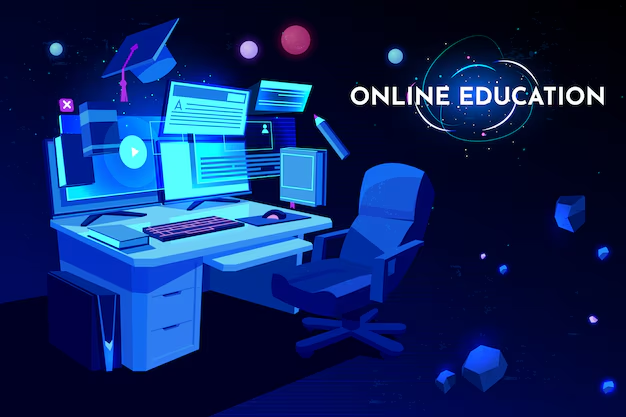As we step into the new decade, the landscape of online learning is undergoing a profound transformation. The integration of cutting-edge technologies, innovative pedagogies, and evolving societal needs is reshaping the way we acquire knowledge and skills. In this article, we will explore the most impactful trends and innovations that are redefining the future of online education.
Introduction to the Future of Online Learning

The future of online learning is characterized by a shift towards more personalized, immersive, and accessible educational experiences. Advances in artificial intelligence (AI), machine learning, and immersive technologies are at the forefront of this transformation. These technologies not only enhance the learning experience but also make education more inclusive and effective.
Key Trends in Online Learning
1. Personalized Learning
Personalized learning is revolutionizing the way students learn by tailoring educational content to their unique needs and preferences. AI-driven platforms analyze learner behavior and adapt instructional content in real-time, ensuring that each student receives a customized learning experience. This approach improves retention and boosts academic performance by challenging learners appropriately and providing targeted support where needed.
2. Immersive Technologies
Virtual reality (VR), augmented reality (AR), and mixed reality (MR) are transforming the educational landscape by offering immersive learning experiences. These technologies enable learners to interact with digital content in realistic environments, enhancing comprehension and retention across various fields. Immersive learning supports remote collaboration, allowing students from different parts of the world to interact within shared digital environments.
3. Microlearning
Microlearning involves breaking down content into bite-sized modules that cater to learners’ busy schedules and short attention spans. This approach emphasizes quick, focused bursts of learning that can be accessed anytime, anywhere, making it ideal for just-in-time learning and skill reinforcement.
4. Collaborative Learning
Online platforms facilitate collaborative learning through virtual classrooms, group projects, and peer-to-peer interactions. Collaborative learning fosters critical thinking, problem-solving, and teamwork skills, preparing learners for success in a globalized and interconnected world.
5. Artificial Intelligence (AI) and Machine Learning

AI and machine learning are powering intelligent tutoring systems, chatbots, and predictive analytics tools. These innovations analyze learner behavior, provide real-time feedback, and adapt instructional content based on individual learning styles and progress.
6. Blockchain Technology
Blockchain technology is poised to revolutionize credentialing and certification in higher education. Blockchain-based digital credentials offer secure, tamper-proof records of academic achievements, enabling learners to securely share and verify their credentials across institutions and industries.
7. Gamification and Microlearning
Gamification incorporates game-like elements into e-learning modules to motivate learners, while microlearning breaks down content into easily digestible chunks. These strategies enhance learner engagement and make learning more interactive and accessible.
8. Mobile Learning (M-Learning)
With the proliferation of smartphones and tablets, mobile learning has become a dominant trend. Learners can access training materials anytime, anywhere, making learning more convenient and accessible.
9. Blended Learning (Hybrid)
Blended learning combines face-to-face training with online learning, offering learners greater autonomy and increasing opportunities for student success. This format gives learners more flexibility and interaction with course materials.
10. Accessibility and Inclusivity

Ensuring that e-learning content is accessible to all learners, including those with disabilities, is an essential trend. This commitment to accessibility makes e-learning inclusive and equitable for all.
Also Read : The Future Of Education: How Technology Is Transforming Learning
Conclusion
The future of online learning is bright and transformative, driven by technological innovations and a focus on personalized, immersive, and accessible educational experiences. As we move forward, these trends will continue to evolve, shaping the educational landscape and redefining how we learn and acquire skills.
FAQs
What role does AI play in online learning?
AI plays a crucial role in personalizing learning experiences, providing real-time feedback, and automating administrative tasks.
How does immersive technology enhance learning?
Immersive technologies like VR and AR enhance learning by creating interactive and realistic environments that improve comprehension and retention.
What is the significance of microlearning?
Microlearning is significant because it caters to learners’ busy schedules and short attention spans, making learning more accessible and convenient.
How does blockchain technology impact credentialing?
Blockchain technology provides secure and tamper-proof digital credentials, making it easier for learners to verify and share their achievements.
What are the benefits of blended learning?
Blended learning offers greater flexibility and autonomy, combining the benefits of face-to-face interaction with the convenience of online learning.

